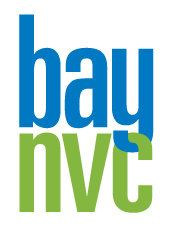This past week I co-led and then led (my co-leader left on the 3rd day for family health reasons) a residential training dedicated to using Nonviolent Communication in the workplace retreat. We called it Making Collaboration Real: Empowering Organizations with Nonviolent Communication. There was no easy access to email, or I would have written much more as we went. Now I can only write about some of what I still remember.
We had three groups of people: a few who work within organizations, a few who work with organizations as consultants, coaches, or facilitators; and a few very experienced practitioners and trainers of Nonviolent Communication (NVC), who came for the learning on how to adapt NVC to the workplace.
Bringing a Needs-Consciousness to Organizations
If there had ever been a question about whether a needs-consciousness is relevant in the workplace, the answer from this week is a very resounding yes. The people who came, some of them without any previous NVC experience, were so hungry and so happy to have the tools, and could see plenty of ways to apply what they were learning immediately in business situations they were facing. Some of them used the tools while still there. One woman for whom this was her first experience told me that a phone call in which she used NVC saved a delicate negotiation between two of her clients.
We practiced together how to be authentic and empathic in the workplace without appearing “touchy-feely,” the main concern that keeps people from showing up as fully as their hearts and souls wish for. We did a series of listening exercises, for example, that lasted about 90 seconds each, in which people practiced finding ways of showing their empathy verbally and non-verbally. I was, as I often am when doing these exercises, so inspired by how 90 seconds of being heard can be so powerful for people, even in a practice setting. Imagine what it would be like if workplaces provided built-in opportunities for people to have that experience in their work life.
Negotiating Agreements
The interpersonal and conflict management parts of the training culminated in an activity in which people experimented with negotiating agreements using the NVC perspective: empathic presence, authenticity, making clear requests, and in particular considering everyone’s needs in proposing agreements. During the practice I was supporting a negotiation with two teams, where one team was practicing using NVC and the other was not. The non-NVC team started the negotiation with wanting to take an item off the table that had previously been agreed to without giving the reasons, then they lied about their reasons for that move, and in the end were compelled to reveal the truth during the negotiations. It came from inside their own humanity and integrity – they couldn’t find sufficient comfort to continue the lie given how much they were trusted by the other group. I really saw how powerful it is for people to experience the assumption of innocence combined with such clear authenticity. What could have easily turned into an escalating conflict by being protected and scheming became the occasion for reaching a place of sharing, together, for solutions that work for everyone.
Facilitating Collaborative Decision-Making
My favorite moment, perhaps, was when we did a mock facilitation session using a real life example from one of the participants. His corporation is in the process of a merger with another one. They are charged with creating a new compensation plan, and there is a lot of tension about it, because the two corporations had used diametrically opposed systems, one quantitative and one qualitative. We sat in a circle as people chose a position about the topic, and everyone was affiliated with one or the other of the two companies. The man who provided the scenario was sitting with his jaw dropped as the facilitation uncovered, with ease, efficiency, and hardly any tension (and with support for diffusing tension when it did arise), all the important criteria people wanted for the new compensation plan instead of focusing on the either/or that he had previously envisioned. At the end of the allotted time, we had a small team entrusted with crafting a plan, supported by the pretend-CEO and the group, and including all the tension in the room within it. Everyone agreed to move forward with that plan.
What’s Next?
I have every intention of continuing to write my empathy and authenticity in the workplace series. Beyond the 3rd piece of the original series, I already have more to say, especially about power relations in the workplace, which we also practiced this week. Until then, you can just ask yourself, whenever you find a difficult moment in your workplace: how can I bring more of my authentic self into this situation while caring for everyone else? How can I understand this situation through the lens of shared human needs? What can I do to support a resolution that works for everyone?
by Miki Kashtan


No comments:
Post a Comment